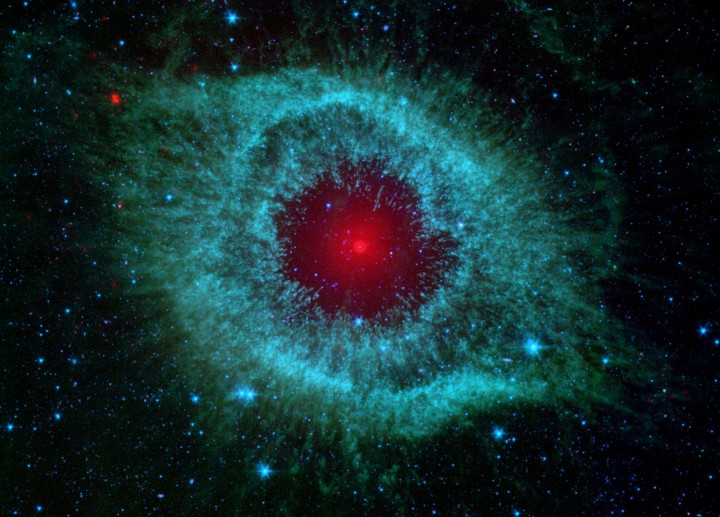A
nebula (from
Latin: “mist”
[1]; pl.
nebulae or
nebulæ, with
ligature or
nebulas) is an
interstellar cloud of
dust,
hydrogen gas and
plasma. It is the first stage of a
star‘s cycle. Originally
nebula was a general name for any extended
astronomical object, including
galaxies beyond the
Milky Way (some examples of the older usage survive; for example, the
Andromeda Galaxy was referred to as the
Andromeda Nebula before galaxies were discovered by
Edwin Hubble). Nebulae often form star-forming regions, such as in the
Eagle Nebula. This nebula is depicted in one of
NASA‘s most famous images, the “
Pillars of Creation“. In these regions the formations of gas, dust and other materials ‘clump’ together to form larger masses, which attract further matter, and eventually will become big enough to form stars. The remaining materials are then believed to form
planets, and other
planetary system objects.

 Dust and the Helix Nebula
Dust and the Helix Nebula
Credit: NASA, JPL-Caltech, Kate Su (Steward Obs, U. Arizona) et al. Explanation: Dust makes this cosmic eye look red. The eerie
Spitzer Space Telescope image shows
infrared radiation from the well-studied
Helix Nebula (NGC 7293) a mere 700 light-years away in the constellation
Aquarius. The two light-year diameter shroud of dust and gas around a central white dwarf has long been considered an excellent example of a
planetary nebula, representing the final stages in the evolution of a sun-like star. But the Spitzer data show the nebula's central star itself is immersed in a surprisingly bright infrared glow.
Models suggest the glow is produced by a dust
debris disk. Even though the nebular material was ejected from the star many thousands of years ago, the close-in dust could be generated by collisions in a reservoir of objects analogous to our own solar system's
Kuiper Belt or cometary
Oort cloud. Formed in the distant planetary system, the comet-like bodies have otherwise survived even the dramatic late stages of the star's
evolution.





No comments:
Post a Comment